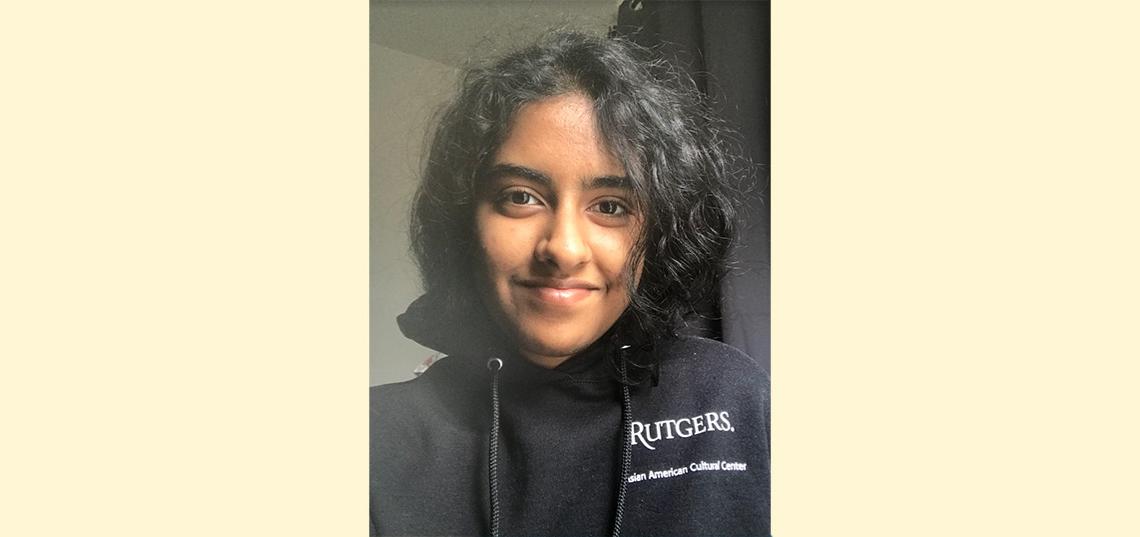
When Michelle Simon graduated with an Information Technology and Informatics (ITI) degree from SC&I in 2023, she was already well on her way to earning her Master of Information (MI) degree through the school’s MI 5+ Year program. Simon is a talented go-getter who maintained a 4.0 GPA and is enthusiastic about the intersection of data visualization, statistical analysis, and prediction models for data-based storytelling. The MI program’s Data Science concentration was a perfect fit for her.
SC&I: What educational path did you follow as an undergrad?
MS: When I first came to Rutgers, I was deeply undecided. I had a lot of creative and technical interests and the appetite to fulfill them all. I experimented with computer science, mathematics, and economics majors, all to no avail. COVID-19 hit in my second semester, and being away from the classroom did not make the decision-making any easier. When the time finally came to choose a major, I scoured the School of Arts and Sciences (SAS) majors online and happened to come across ITI. Specifically, the Web Design and Development pathway piqued my excitement, especially upon finding the UX/UI design profession. At last, I felt that my creativity and technical skills could flourish equally in my career. I’m proud to be an alumna of the School of Arts and Sciences Honors Program and a founder and former president of the Rutgers Data Science Club.
SC&I: How did you find the transition between SAS and SC&I?
MS: The connection between SAS and SC&I for the ITI major made the transfer easy. I was able to apply the computer science (CS) courses I completed for credits in the degree program. This flexibility gave me the encouragement to continue pursuing CS as a minor and develop my algorithmic expertise. The openness of my workload also led to my discovery and happy adoption of the new Data Science minor. Through my work in all three programs, I strengthened my creative muscles and developed the creativity of computer and data science’s logical programming applications. I finally designed an education that fully reflected myself. I learned a great deal in this period, and this learning led to a change of plans.
SC&I: What change of plans led you to pursue the MI degree at SC&I?
MS: I always knew I wanted to pursue a master’s degree, but I wasn’t sure when I would be able to. It seemed like a more distant idea until my degree programs started to sharpen my interests. The applications and skills I learned in my Data Science minor excited me, seeming more creative than Computer Science and more logical than UX/UI. The cultural phenomenon resulting from Data Science, such as AI, was also popularized during my time at Rutgers, so the career choice was full of incredible opportunities. When deciding to expand my higher education into Data Science, I did not have to look further than SC&I’s MI 5+ Year program that’s open to ITI majors. Its various courses, exciting curriculum, and perfect timing made it the best way for me to continue my Data Science learning.
SC&I: What’s most rewarding and most challenging about the MI program?
MS: The greatest reward of the MI program’s Data Science concentration was my ability to explore the vast landscape of Data Science. I took classes regarding the Big Data era, Web Programming, Machine Learning, Data Analytics, and so many more fields. I improved and honed my technical skills and picked more platforms and programming languages to use. Embracing them fully in my final projects and papers was a gratifying experience, and I produced some of my best work. I also met so many different types of graduate students in and out of the 5+ Year program. Many were parents, long-time employees, and people who made an effort to return to their education. I deeply appreciate a program that allows for flexibility and gives anyone a chance to pursue their goals. Having so many online courses as a result was a challenge, but a worthwhile one.
SC&I: How did your studies prepare you for a career?
MS: My technical courses definitely prepared me for the analytics required in a data science career. I applied the most Python in Problem Solving with Data, created the most on Tableau for Information Visualization & Presentation, and learned the most SPSS in Research Methods. There were also courses where supportive relationships with my professors taught me even more. Machine Learning for Data Science with Assistant Professor of Library and Information Science Tawfiq Ammari expanded the basics of the data science field to the incredibly relevant phenomenon of artificial intelligence, natural language process, and black box algorithms. Web Programming with Associate Teaching Professor of Library and Information Science Anselm Spoerri dove me into JavaScript’s frameworks and libraries through some of the most rigorous programming I have ever done in the MI program. Competitive Intelligence with Assistant Dean for Programs and Assessment Professor Sharon Stoerger enlightened me to the human element of data representations and how to best use its analyses to improve the contextual world around me. These professors and their curriculums had the greatest impact on my readiness for graduation, and I thank them endlessly.
SC&I: What advice would you like to share with current or prospective students?
MS: The MI program offers concentrations for the wide variety of people who find themselves at SC&I. Whatever the interests of a student, I would welcome them to the program, for understanding information is a necessity to understanding the world, its processes, and its people. That being said, MI offers so much to all students, so learn and absorb everything you can, and pay attention to what you retain with excitement. I chose data science because it moves me just as much as it is moving the world around me. Any student who knows what to focus on knows how to apply everything they have ever learned and make the greatest impact.
Image: Michelle Simon
